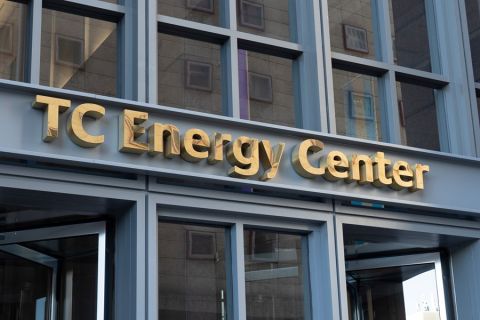The first hanger designs specifically developed to run liners were true to their descriptive name. The weight of the liner set mechanical slips in a vertical well, and cement was used to seal the liner top. These were mechanical devices that lacked reliability, particularly in deviated wellbores.
As wells were drilled to greater depths, more reliability was needed and eventually obtained through the use of hydraulically set hangers. Once directional drilling and horizontal completions became more prevalent, many equipment suppliers adapted existing technology to the changes in well construction, with more focus on the running tools.
More robust running tools ensure liners can be deployed in deviated wellbores that require torque, washing and reaming. However, the basic concept of using slips with a cone remains at the heart of all conventional systems, and options are added to this basic offering to aid in functionality and reliability such as dual cones, liner top packers and high-strength running tools.
Trends in liner hangers
The latest developments in running liners include metal-formed liner hangers. Expandable systems have dominated development in liner hanger technology for the past 10 years. These systems are popular because of increased setting and deployment reliability. The advances in technology are apparent through the popularity of the expandable systems and the enhanced applications in different well profiles around the world. Still, expandable systems using hydraulic pressure to set the liner top come with their own risks (e.g., high hydraulic pressure on the rig floor). Other limitations include continued complexity, potential leaks in connections and incompatibility with some rig operations.
To combat these challenges, Seminole Services developed the Powerscrew Liner System, a tool utilizing a metal-forming process that does not require high hydraulic pressures and eliminates the risks associated with reaming to setting depth. The Powerscrew is a torsionally set metal-formed liner hanger that works by converting torque from the top drive into linear force to set and seal a liner top.
The assembly is deployed on drillpipe and conveys the liner to total depth (TD) with a unique running tool. In many cases, running a liner to TD requires compression, rotation and circulation. This is especially true for longer laterals, so special design emphasis has been placed on the running tool, which can take higher compressional loads associated with reaming.

The Powerscrew’s running tool is designed for both torque and compression while setting the liner top. As a result, these loads transfer more easily through the running tool during liner deployment.
The system includes a patented helical stretch method of metal-forming using a multi-lead rifling (MLR) mandrel. The MLR mandrel provides micro-upsets, increasing the post-formed collapse, and it counter-rotates to eliminate residual torque. In addition, helical stretch forming has less friction and therefore requires less force to forge a metallic tubular downhole. The tool incorporates a high-strength clutch that disengages the running tool from the liner upon reaching setting depth and initiates the metal-forming process with the application of torque. The wellsite operator monitors the torque gauge and weight indicator to ensure proper operation.
Liner hanger market trends
A deep dive into the liner hanger market gives credence to the idea that liner size and weights matter tremendously. With the trend in U.S. drilling focused on shale plays along with the downturn in offshore activity, there has been a shift in demand from larger tools to smaller ones. Increases in demand for liner hanger tools such as the 4½-in.-by-7-in. and the 5-in.-by-7-in. stem from the increased use of liners in horizontal sections common in U.S. shale production. The continuing increase in drilling longer lateral sections also will provide more meaningful savings to those operators choosing to run liners.

Operators drilling more complex wells have facilitated alternatives in well construction that allowed metal-formed liner systems an entry path while also providing multiple options to conventional system offerings. Liner hangers no longer, these well construction tools were built to withstand tortuous well paths and high loads, adding complexity. The tradition of hydraulic setting methodology transferred to the newer expandable systems can still suffer from difficulties souring hydraulic horsepower from the rig. Given that longer laterals will continue to be the trend in producing from shale, less complex tools that can withstand the rigors of deployment in horizontal wells will offer a viable solution to operators. Since rotary drilling rigs are readily available to deliver torsional power through drillpipe, the Powerscrew offers an alternative in metal-forming methodology.
Recommended Reading
Genesis Energy Declares Quarterly Dividend
2024-04-11 - Genesis Energy declared a quarterly distribution for the quarter ended March 31 for both common and preferred units.
TC Energy Appoints Sean O’Donnell as Executive VP, CFO
2024-04-03 - Prior to joining TC Energy, O’Donnell worked with Quantum Capital Group for 13 years as an operating partner and served on the firm’s investment committee.
Chord Energy Updates Executive Leadership Team
2024-03-07 - Chord Energy announced Michael Lou, Shannon Kinney and Richard Robuck have all been promoted to executive vice president, among other positions.
Moda Midstream II Receives Financial Commitment for Next Round of Development
2024-03-20 - Kingwood, Texas-based Moda Midstream II announced on March 20 that it received an equity commitment from EnCap Flatrock Midstream.
Humble Midstream II, Quantum Capital Form Partnership for Infrastructure Projects
2024-01-30 - Humble Midstream II Partners and Quantum Capital Group’s partnership will promote a focus on energy transition infrastructure.





